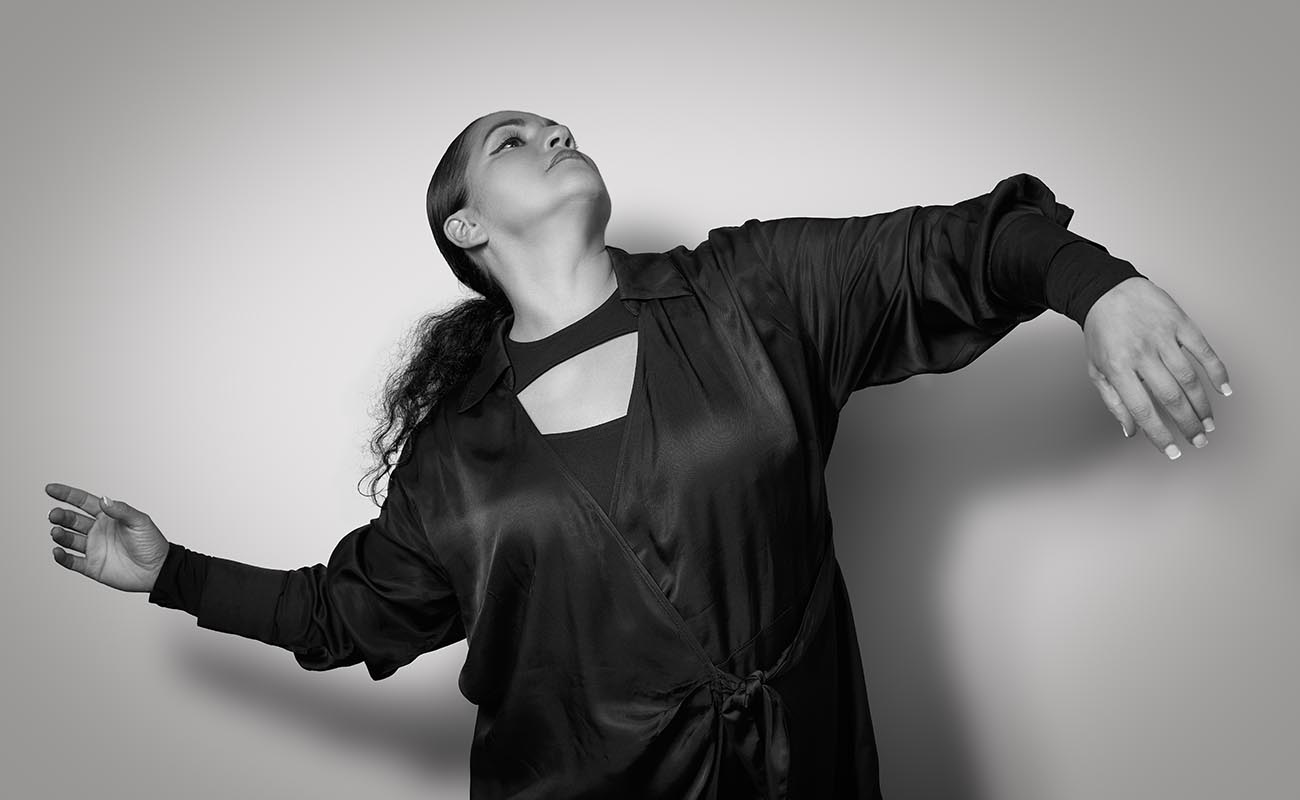Soraya Clavijo: Seville school, Jerez temperament and back to square one
Dancer Soraya Clavijo has always shown her admiration for classic flamenco, but now she’s returning to the Festival de Jerez, renewed and reset, determined to put all her cards on the table.

In 2004 I saw her win the “Carmen Amaya” prize at the Córdoba contest. She surprised me with her intelligent mix of the sedate Seville school, acquired during her time in that city, and the energy of Jerez where she was born. She’s given courses in Japan and Russia among many other places. This is a woman with firm convictions and temperament that comes from the experience of a thousand battles.
On February 26th this interesting dancer will present her work O D I S E A at the Museos de la Atalaya within the program of the Festival de Jerez.
Soraya, you’ve been a professional dancer for 25 years. ¿Do you feel properly recognized in Jerez? ¿And outside Jerez?
In my hometown of Jerez de la Frontera, yes, I’m recognized on a professional and personal level, and I’m known as a hard worker. Where I don’t fit in artistically is in the opinion and behavior of some of the artistic families of Jerez who don’t want to recognize my achievements and personality as a Jerez artist. Bulerías is a very popular dance form in Jerez, for which I was awarded the National Prize “Carmen Amaya” in Córdoba in 2004, something I’m very proud of personally and for my city.
Has flamenco dance changed in this quarter century?
Yes, a lot, the dance as well as the criteria and demand for flamenco. Everything is in flux, there’s a great deal of ignorance, egos, uncontrolled lucrative earnings, and above all, a lack of respect. This leads to the art-form, the spontaneity, the very nature of the genre being gradually lost or becoming deformed.
Your artistic personality is unique, subtle and yet intense. What maestros have you had to be able to create these forms?
I’ve looked up to a lot of people, but my dance per se at this precise time, and the age I have, is very carefully worked, forged and marked by my own self, by the belief I have in myself, both physically and psychologically, I only listen to myself. I look at everyone from the present generation, and from all the previous generations. But when it comes time to dance, the concept, the experience and talent for flamenco dance are my own, for which I give thanks to God every single day.
Several years back I heard you say you liked using the traditional accessories of women’s flamenco dance…the bata de cola, the fan, castanets, shawl… For a time these accoutrements had fallen into disuse, but you’ve continued to defend them. ¿Would you say they’re back in style?
They haven’t been lost, but it’s true they’re not used with flamenco intent because there’s now confusion between classic Spanish dance and flamenco. A shawl should be moved in rhythm, treating it with affection and tenderness because it’s an accessory with great artistic possibilities. Nowadays the shawl is moved brusquely, or as knowledgeable maestros would say, “shaking out the dust”. As far as castanets, the music has been lost, the rhythm and the sound shading. They’re played very aggressively, with the wrists flapping. And the bata de cola, my beloved bata de cola that I respect and admire so much, it’s become an acrobatic complement for kick-boxing moved like Ferraris!
Do you like dancing in trousers?
I’ve danced in trousers, and in fact I really like it. I used to wear them for siguiriyas in my mid-twenties. I was very young and fresh, with a youthful body, slim and curvy. I wore traditional men’s pants with a cropped jacket. That way of dressing was called “pantalón de corto”. I stopped using it because I had a very bad experience with the singers and guitarists, they spent more time looking at my behind than my dance.
In previous works you’ve made use of veteran artists like Fernando de la Morena and Concha Vargas. This year you’re coming to the Festival de Jerez with Angelita Montoya, which is very interesting. What does Angelita do in this show?
Angelita Montoya’s participation in my project O D I S E A is to be a surprise, you’ll have to come and see it.
What is this show about that you’re bringing to the Festival?
It’s the project of my life where I’ll be seen as a completely regenerated woman, reset and very committed to myself. The woman of the future, a fearless woman who has made peace with her loneliness, accepting herself with all her defects and virtues. The gift of life sets up false steps and trials that force you to be a fighter…life is an O D I S E A.
Do you think we’ve seen the worst of the pandemic, or do you still feel vulnerable?
I’ve come out of the pandemic stronger and more self-assured, and I’ve learned I don’t need to please everyone else…only myself.




